How much do you invest in SEO?
We know the answers can range a lot depending on the type and size of business you have. So instead of looking at a specific number, we created this “SEO Effort v. Result” model that you can apply to your own scale and decide for yourself what the right number is.

The “Slow But Steady, Every Month my Budget/12 and That’s All” Model 1.
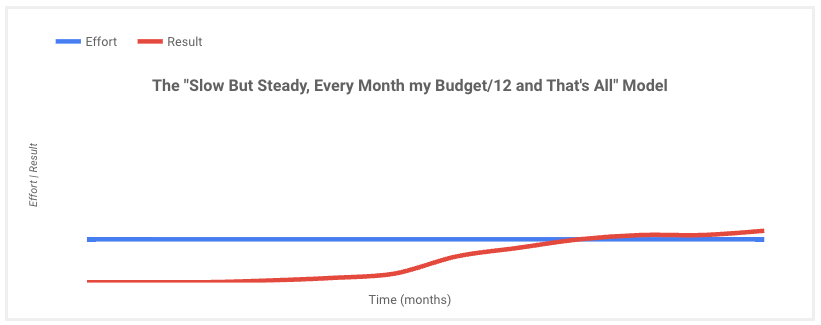
This is where you have decided that SEO is a necessary investment, and you are going to allocate a fixed monthly budget to it over a long term.
This model is very typical of a business that has hired an agency to deliver SEO work, assuming that work is also completed and is in line with what should be done, we think it might follow this sort of growth pattern.
The investment may be on the lower side of where maybe it ought to be, because too often, it’s a “reluctant” investment.
Remember: any agency doing SEO work for you should be able to demonstrate what was done, and align with a plan that you have agreed. There should be complete transparency over the tasks and a set of clear and reasonable KPIs to work towards.
The “I know I need SEO but Don’t Have the Long Term Budget” Model 2.
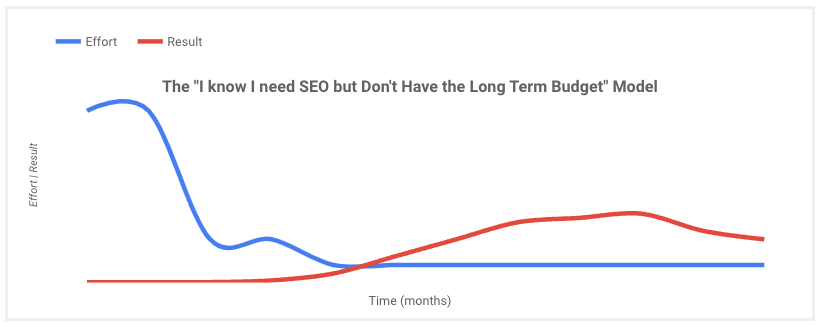
You know you need SEO and you make a really good up-front investment into several aspects of work, like technical SEO, Information Architecture planning and Content up-front for the website.
What the chart suggests is that you won’t reap the benefits until a little later. The danger about this is that you might get the idea that the SEO work wasn’t necessary after all, because you made the wins after you stopped doing SEO. You may even end up losing the positions eventually, which makes it all seem too fickle, and it could fel like the whole thing was a bad idea in the first place.
This is a common model for Startups who see value in it – perhaps even have a dream of being Number 1, but don’t continue to invest in it. A Startup might run out of cashflow if they “put all their eggs in the SEO basket” and have run out of marketing cash. This is an issue around planning and lack of capital. At RankPower, we believe you should establish cashflow first and then invest some of the net margin into SEO.
The “Why No Results Yet? – I give Up!” Model 3.
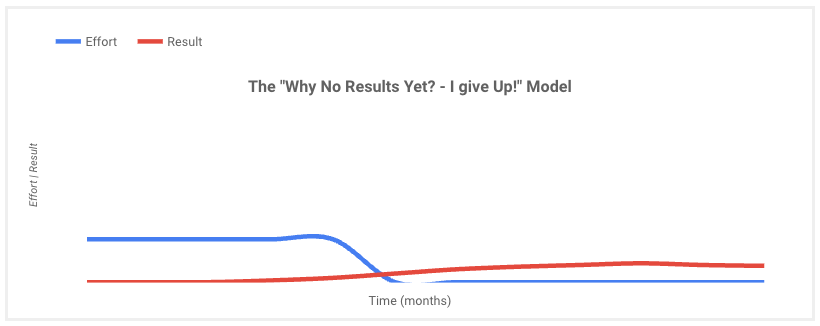
This is the same as Model 1, but the business gave up when results didn’t come quickly enough. This is an issue around expectations. SEO is definitely a long term plan.
By giving up on it early, the business achieves maybe a tiny base level of organic traffic, but nothing more and no further growth likely.
The “I Can’t Afford to Invest Much in SEO” Model 4.
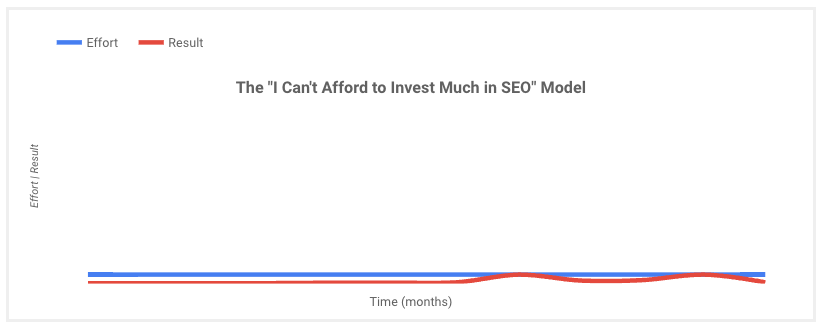
In this model, the business decided that SEO wasn’t really where the investment needed to be.
Aside from some brand rank and occasional blips, there is little if any organic position won over time.
In our view, the thinking should be: “I can’t afford NOT to invest in SEO”.
This business would rely entirely on other channels like Paid Marketing and would be at great risk of the Paid Marketing channels had pricing changes, or faced heavy competitive activity.
The “I know how to build success with SEO” Model 5.
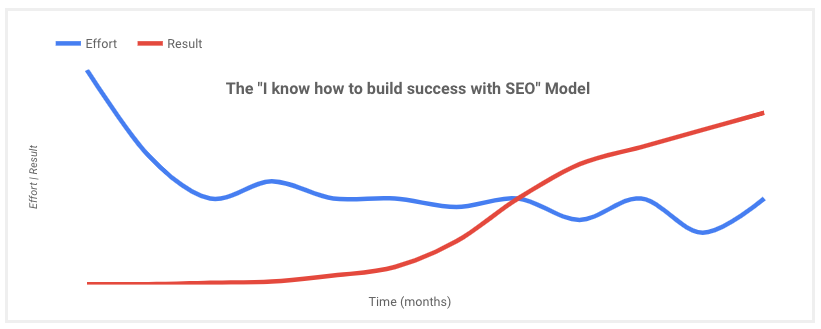
With a strong upfront investment into Information Architecture planning, on-page Technical SEO, and initial Content (and Keywords), this business makes a plan for success.
They also allocate as much effort as they reasonably can over the long term, and even have the odd month where they invest less (or even none), but know they need to keep it up to keep gaining.
As with other SEO results, the up-tick might take a while, but it does come, and when it comes, it’s strong.
Businesses that invest in SEO like this could survive even if at some stage they shut down their Paid Marketing < that right there is key!.
Delivery was probably collaborative, since having an in-house SEO expert can be expensive. So with agency support, a part time in-house person could execute this plan.
So which is Your SEO Investment Model?
Reach out if you want to discuss what the ideal balance of channel investment might be for your business.
Services related to SEO that we can support:
Google Search Console Account Setup
SEO Technical Audit
SEO Keyword and Content Plan (Research Phase)
SEO Keyword and Content Plan (Build Phase)
SEO On-page Implementation

